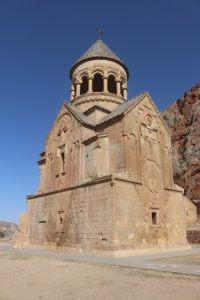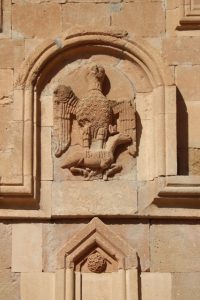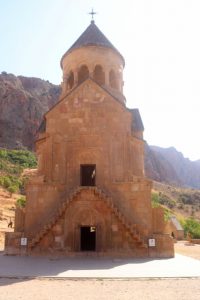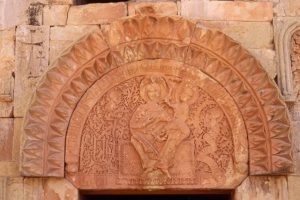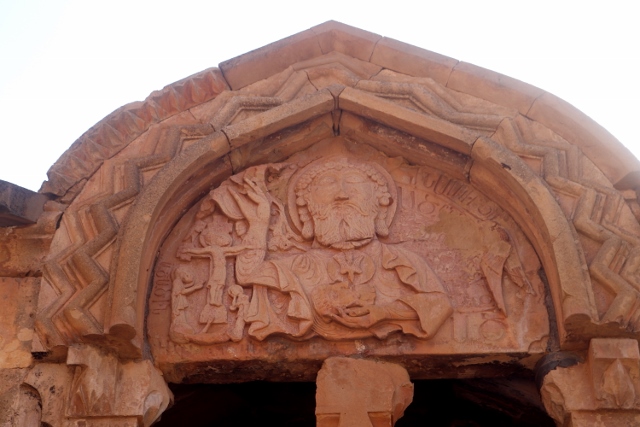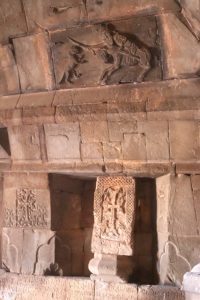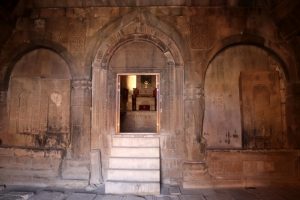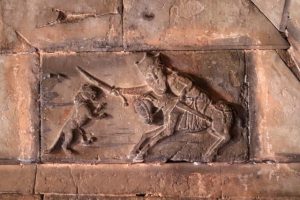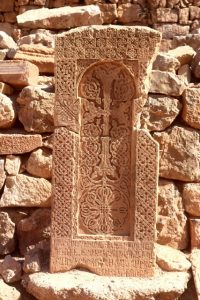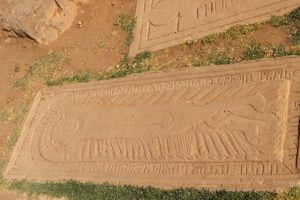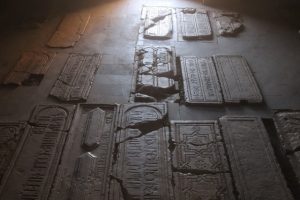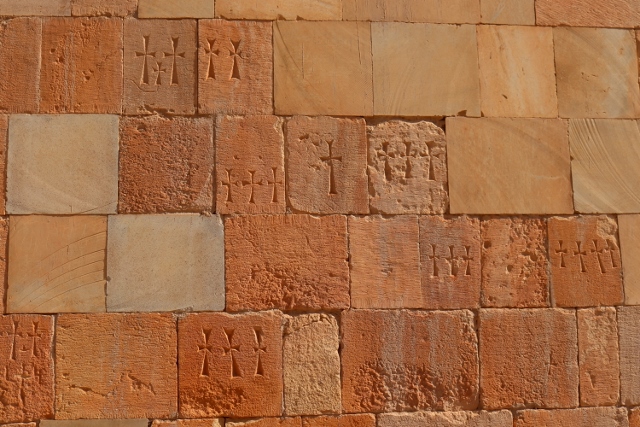Noravank (nora is new, vank means monastery) is located high up a small plateau above the Gnishik River, a tributary to the Arpa River. Arriving in the morning provides a splendid view of the light-coloured churches against the backdrop of red rocks in the sun.
The oldest churches here are the ruins of 9th-10th Century Church of John the Baptist, but the working churches of the complex are 13th C, built by members of the Orbelian family, Georgians who moved into Armenia at the time. Remember that the Orbelians were also responsible for the Selim Caravanserai seen earlier. One of the churches served as mausoleum for the family, but outside the church, and in the gavit, further tomb stones are to be found.
A characteristic of the churches here are the tympana – a tympanum is a semi-circular decoration above a door, for instance. Above both main churches, the John the Baptist church and the Mother of God church, are two tympany, each with their own specific image. The upper one of the John the Baptist church is the most remarkable, an image of God holding a head in his hand, although it remains unclear whose head it is – probably John the Baptist.

